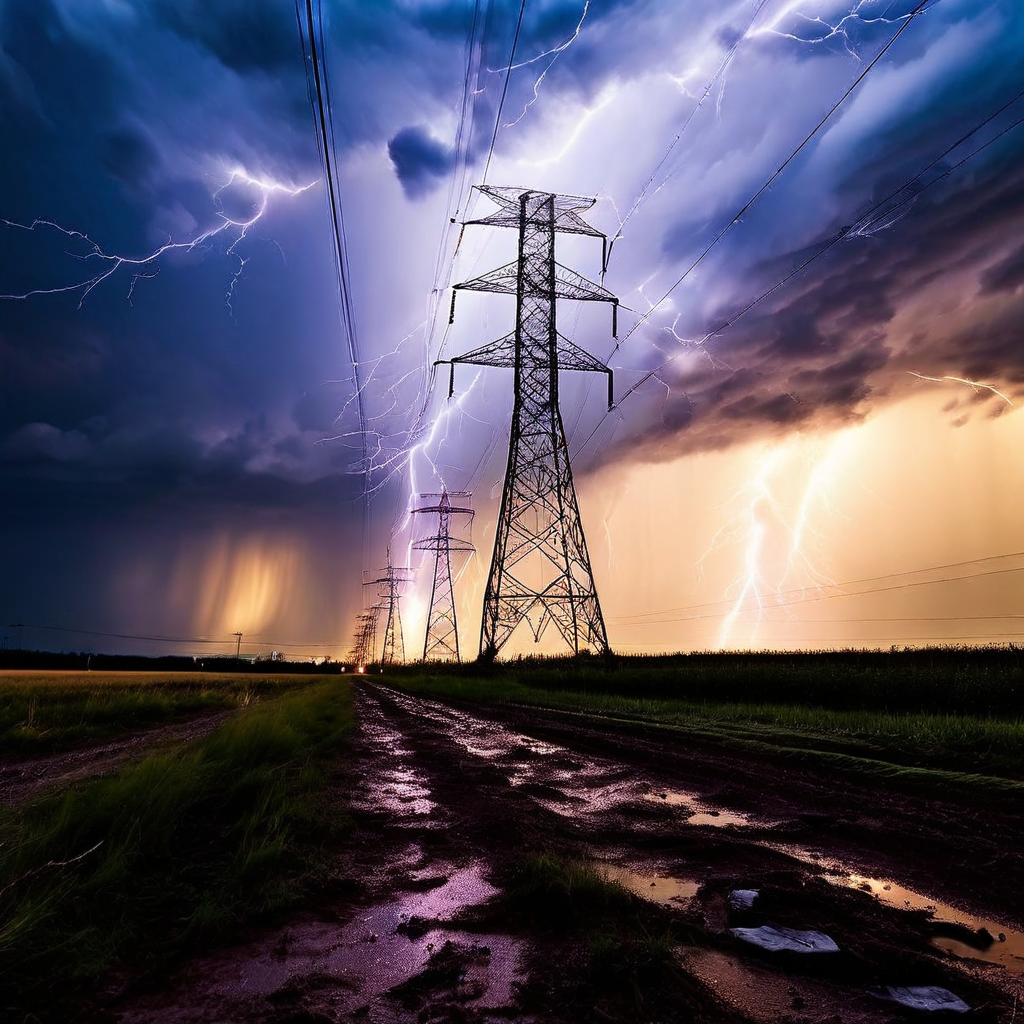Introduction to Lightning and Surge
Lightning, a powerful force of nature, poses significant threats to electronic systems. Understanding the types of lightning and their effects is crucial for developing effective mitigation strategies. This article delves into the classification of lightning, the hazards associated with it, and provides comprehensive strategies for protecting electronic systems from the dangers of lightning and surge.
Understanding Lightning Types and Their Impacts
Lightning can be categorized into two primary types, each with distinct characteristics and effects that can lead to lightning and surge issues:
- Direct Lightning

Direct lightning occurs when a lightning bolt strikes an object on the ground directly. This type of lightning is highly energetic and can cause severe damage, contributing to the potential for lightning and surge events.
- Induced Lightning and Surge
Induced lightning is not a direct result of cloud discharges but is caused by the strong electromagnetic field generated by a direct lightning strike. This field induces electric currents in nearby conductors, potentially causing interference or damage to electrical systems and leading to surges associated with lightning.
Infiltration Paths of Lightning and Surge
Lightning and surge can infiltrate electronic systems through various paths, primarily through distribution and signal lines, which if unprotected, can result in severe damage to the systems.
(A)Through Distribution Lines
- Electromagnetic Field Induction: When lightning strikes a building, it can induce overvoltages that can be transmitted through the distribution lines to the connected electronic equipment, highlighting the need for effective lightning and surge protection.
- Impact of Nearby Strikes: Even indirect strikes can generate strong fields inducing overvoltages that can propagate along distribution lines, emphasizing the importance of considering lightning and surge in system design.
- Line Mutual Induction: Inside a building, if distribution lines are wired too closely together, they may induce inrush currents into each other, potentially causing damage to connected electronic equipment and necessitating lightning and surge protection measures.
(B)Through Signal Lines
- Induction from Communication Lines: Signal lines are particularly vulnerable to the effects of lightning and surge, which can be transmitted directly through these lines to the connected electronic equipment, affecting their performance and reliability.
- Comparison with Power Supply Lines: Although the magnitude of lightning and surge on communication lines might be less than on power supply lines, the sensitivity of signaling equipment means that even small surges can cause significant damage, underlining the importance of surge protection.
Preventive Measures for Electronic Systems Against Lightning and Surge
To safeguard electronic systems from the damaging effects of lightning and surge, the following preventive measures should be considered:
- Installation of Surge Protection Devices (SPDs): Installing SPDs at the entrance of power distribution lines and signal lines can effectively absorb and suppress the surges caused by lightning, protecting the systems from potential damage.
- Reasonable Wiring: Proper wiring practices can help avoid too close proximity of power distribution lines and signal lines, reducing the risk of electromagnetic induction and the associated lightning and surge hazards.
- Equipotential Connection: Ensuring that metal components and equipment inside the building are equipotentially connected can help reduce potential differences and mitigate the effects of lightning and surge on the systems.
- Use of Shielded Cables: For signal lines, the use of shielded cables can significantly reduce electromagnetic interference and protect against the surges induced by lightning.
- Regular Testing and Maintenance: Regularly testing the performance of lightning and surge protection facilities and maintaining or replacing them as needed ensures that the systems remain protected against the threats of lightning and surge.
Conclusion
By implementing the aforementioned strategies, the impact of lightning and surge on electronic systems can be significantly reduced, improving system reliability and safety. A proactive approach to understanding and mitigating the effects of lightning and surge is essential for protecting our valuable electronic infrastructure from the devastating effects of this natural phenomenon.
